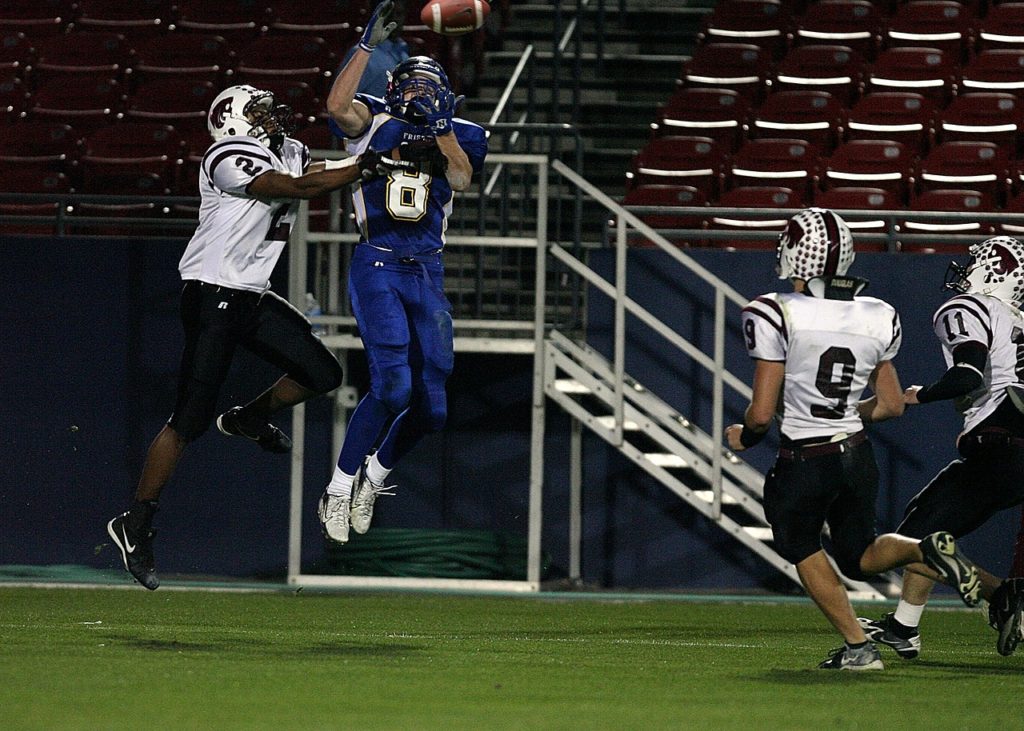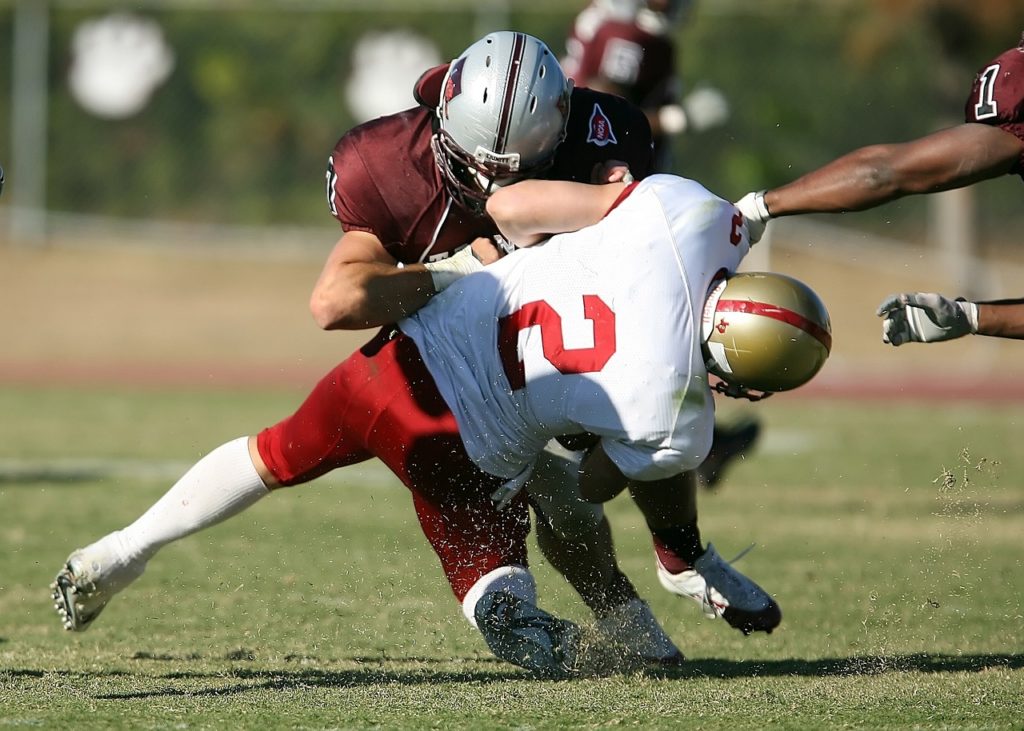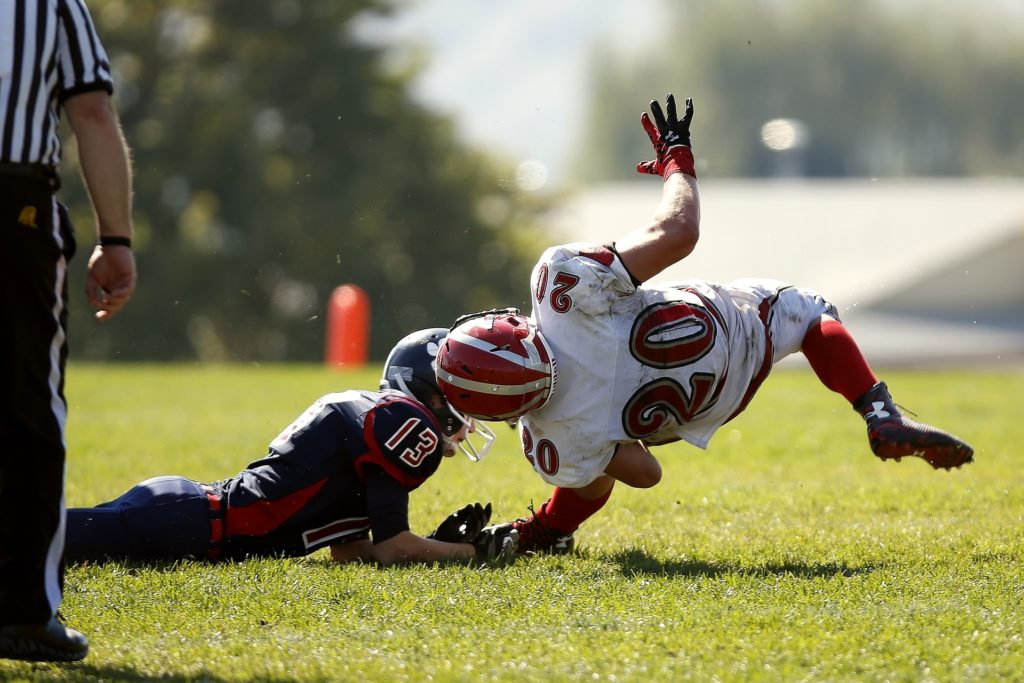Common Orthopedic Football Injuries
It’s finally August which means that all of you football fanatics out there are counting down the days until you will be watching a game (or playing) under those Friday night lights. For all of the excitement surrounding football there is also a little bit of anxiety from parents of players who are hoping that their child doesn’t get injured. While we’d like to say that football injuries are avoidable it’s an unfortunate fact that injuries happen and when they do you can rest easy knowing that Orthopedic & Shoulder Center will be your “12th Man”. In this post we are going to cover some of the most common orthopedic football injuries. These include ACL injuries, meniscus tears, and AC (shoulder) joint injuries.
ACL Injuries (Knee)
An Anterior Cruciate Ligament (ACL) injury is a very common knee injury. There are four main ligaments in your knee that help to keep the knee stable and control the movement of the knee, the ACL is one of them. The ACL is located behind the patella (kneecap) and connects the tibia to the femur. The ACL may be torn or sprained. Those who play sports like football and soccer are more susceptible to ACL injuries. If you have suffered from a torn ACL then you join the ranks of Pro-Football Players Tom Brady, Joe Thomas, and Adrian Peterson.
Only about 30% of ACL injuries result from direct contact with another player or object. The rest occur when the athlete decelerates while cutting, pivoting, or sidestepping; lands awkwardly; or hyperextends. This could happen as a football player changes direction suddenly or is tackled from the side or behind.
Symptoms of ACL injuries are:
- A “popping” noise at the time of injury
- The affected knee giving out
- Pain and swelling
- Loss of range of motion
- Pain while walking or putting weight on the knee
Lawrence Li, MD will be able to diagnose an ACL injury through physical examination and the use of imaging tests like MSK Ultrasound and MRI. The treatment for an ACL injury will depend of the severity of the injury- whether it is a sprain or tear. In the case of a tear, surgery will most likely be the recommended plan of care, especially for an athlete who wants to return to an active lifestyle. Those who are elderly or may not live an active lifestyle may not require surgery but must understand that their ACL tear will not heal. In the case of those who do not have surgery, physical therapy will most likely be recommended. For most people, surgery is the suggested course of action. The ACL is reconstructed through arthroscopic surgery. Surgery is then followed by physical therapy which will focus on regaining full joint motion and then strengthening the athlete for return to their sport.
Meniscus Tears (Knee)
It is not unusual for a meniscus tear to accompany an ACL tear and like ACL injuries, meniscus tears are a common knee injury treated by an orthopedic surgeon. Football players and other contact sport athletes are at a higher risk for meniscus tears. There are two menisci in each knee, one at the outside and one at the inside of the knee. These “C-shaped” cartilage disks help to support and stabilize the joint. A meniscus tear is common after a traumatic injury to the area, when the knee is bent and twisted. The menisci can tear in different ways and are classified by their appearance and location.
The symptoms of a torn meniscus mirror those of an ACL tear:
- Pain and swelling
- Catching or locking
- The affected knee catching or “locking”
- Loss of range of motion
Just like with an ACL tear Dr. Li will review your history, examine your knee, check X-Rays and order an MRI to get a visual map of your knee. Treatment of a meniscus tear will depend on the type of tear, the location of the tear, and the size of the tear. Conservative treatment may be the first step but if the symptoms continue, arthroscopic surgery may be needed to resolve the problem. After surgery, rehabilitation will be crucial for restoring mobility and strength. Most patients who suffer from a meniscus tear are able to return to their pre-injury level if they have proper diagnosis, treatment, and follow the rehabilitation plan.
AC Joint Injury (Shoulder)
Football players suffer from a variety of injuries, but they aren’t all knee injuries. Shoulder injuries are the fourth most common injury in football players. The AC joint is a common site for injury. The AC joint or Acromioclavicular joint is where the shoulder blade meets the collar bone. If the bones making up the AC joint are injured, it is considered an AC separation, where as if the upper arm (humerus) pops out of the shoulder socket, it is a dislocated shoulder. When a football player is tackled, the direct impact or landing on the outside of the shoulder can result in an AC joint injury.
Symptoms of an AC joint separation are:
- Pain at the top of the shoulder that is worse with overhead movements
- Deformity or bump over the top of the shoulder
- Limited shoulder mobility
- Bruising or swelling
Your orthopedic surgeon will assess the severity of the injury through physical examination and X-rays. Most AC separations can be effectively managed without the need for surgery. Conservative treatment such as rest, ice and anti-inflammatory medication is often enough to manage the pain and physical therapy may be recommended to help restore function. In severe cases where there is a large separation, surgical intervention may be required.
Injuries are an unavoidable part of the game but Dr. Lawrence Li and the team at Orthopedic & Shoulder Center will help you tackle your football injuries and get you off the sideline and back in the game.



